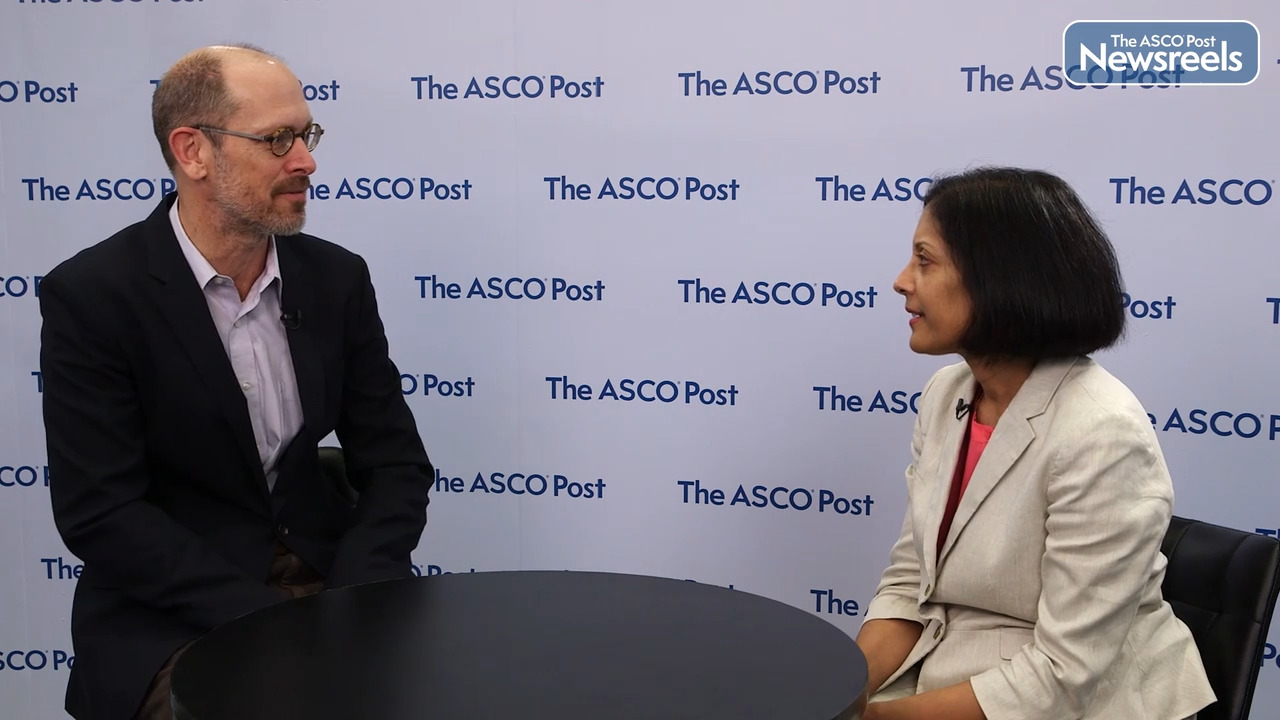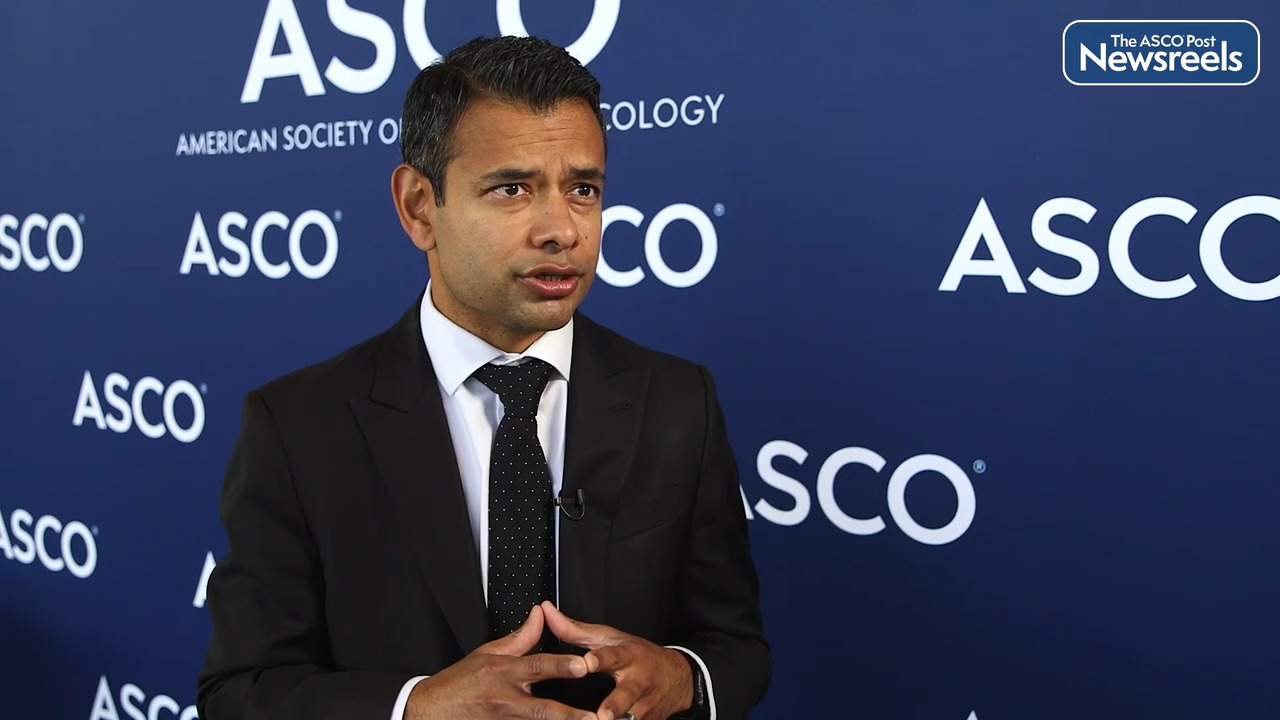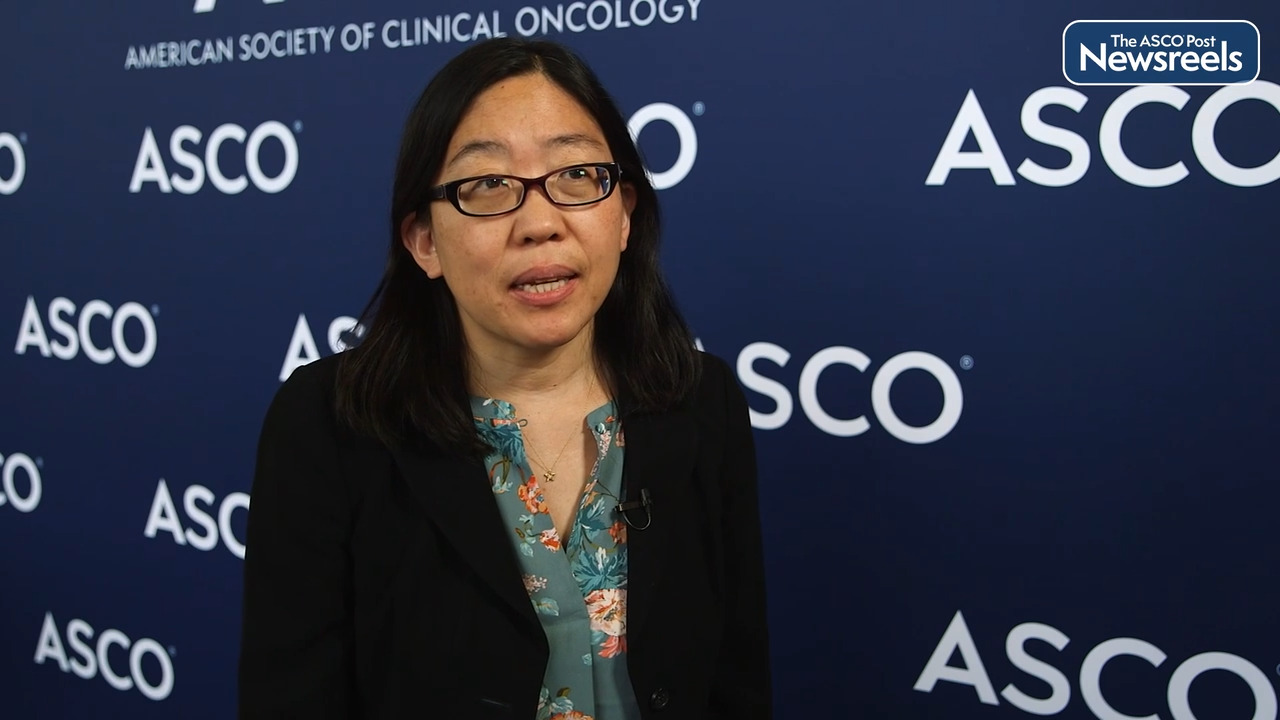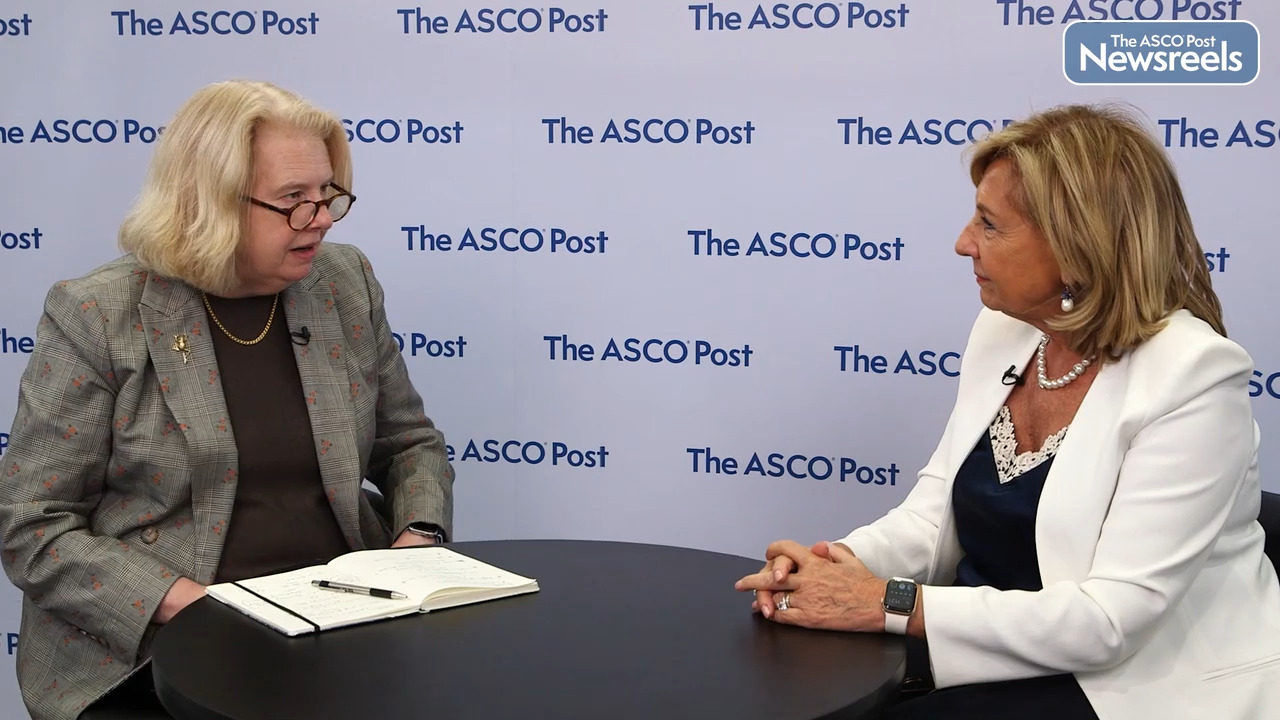Shilpa Gupta, MD, on Urothelial Cancer: Defining Who Is 'Platinum-Ineligible'
2022 ASCO Annual Meeting
Shilpa Gupta, MD, of the Cleveland Clinic Foundation, discusses an updated consensus definition for standard therapy and clinical trial eligibility for patients with metastatic urothelial cancer who are platinum-ineligible, criteria that are proposed to guide treatment recommendations for this population. This may be especially important now that the U.S. Food and Drug Administration has restricted the use of first-line pembrolizumab to those who are considered platinum-ineligible (Abstract 4577).
Transcript
Disclaimer: This video transcript has not been proofread or edited and may contain errors.
Frontline therapy for patients with metastatic urothelial cancer who are Cisplatin ineligible has continued to evolve. And the current standard of care is Gemcitabine and Carboplatin chemotherapy followed by durvalumab maintenance. In 2017, Atezolizumab and Pembrolizumab were approved as single agents for this patient population. But then the label was restricted to patients who are Cisplatin ineligible with high PD-L1 expressing tumors, or those who are not eligible for any platinum. And now Pembrolizumab use is only restricted to patients who are platinum-ineligible. Back in 2019, we presented results from our survey for defining platinum-ineligibility by sending a survey out to around 60 US-based medical oncologists. And we presented a consensus definition at GU ASCO that year. And now with the changing landscape, we updated the survey and used the similar cohort of responders to provide a consensus definition update. So we ask questions like: what equal performance status would physicians use to deem someone platinum-ineligible? What creatinine clearance cutoff would they use? What peripheral neuropathy cutoff, heart failure, cutoff? And in any person with ECOG performance status two, what would be the creatinine clearance cutoff? And based on the majority of responses, we found that most physicians found that creatinine clearance less than 30 milliliters per minute, peripheral neuropathy greater than are equal to grade two, significant heart failure that is NYHA class three or higher, equal performance status greater than our equal to three, and in a patient with equal performance status two, creatinine clearance of less than 30 milliliters per minute. Those were the factors that would make them hesitant to use Carboplatin. So we proposed that if any one of these criteria are met, that patient can be deemed as platinum-ineligible and be a candidate for single agent immunotherapy. Otherwise, we offered Gemcitabine and Carboplatin followed by durvalumab maintenance. Notably age was not a cutoff for these patients based on our survey.
Related Videos
The ASCO Post Staff
Michael J. Overman, MD, of The University of Texas MD Anderson Cancer Center, and Smitha Krishnamurthi, MD, of the Cleveland Clinic, review three abstracts, all of which enrolled patients with newly diagnosed RAS and BRAF wild-type metastatic colorectal cancer with left-sided primary tumors. The discussion centers on what the study results indicate about the use of an EGFR therapy and weighing the risk to quality of life from rash, in particular (Abstracts LBA3503, LBA3504, LBA3505).
The ASCO Post Staff
Alicia K. Morgans, MD, MPH, of Dana-Farber Cancer Institute, and Ian D. Davis, PhD, MBBS, of Monash University and Eastern Health, discuss the latest findings from ANZUP Cancer Trials Group’s ENZAMET cooperative group trial of enzalutamide in patients with metastatic hormone-sensitive prostate cancer. The results corroborate the benefit of enzalutamide with improved overall survival, and involve some exploratory subgroup analyses (Abstract LBA5004).
The ASCO Post Staff
Sumanta K. Pal, MD, of City of Hope National Medical Center, discusses findings from the COSMIC-021 study, which showed that cabozantinib plus atezolizumab demonstrated encouraging clinical activity with manageable toxicity in patients with inoperable locally advanced or metastatic urothelial carcinoma. The combination was administered as first-line therapy in cisplatin-based chemotherapy–eligible and –ineligible patients and as second- or later-line treatment in those who received prior immune checkpoint inhibitors (Abstract 4504).
The ASCO Post Staff
Sue S. Yom, MD, PhD, of the University of California, San Francisco, discusses a translational analysis from the NRG-HN002 study. This phase II trial established the feasibility of the tumor tissue–modified viral (TTMV) human papillomavirus DNA assay in clinical trial specimens. The goal is to use such an assay to measure tumor volume, levels of TTMV over the course of treatment, and the association of TTMV to treatment outcomes (Abstract 6006).
The ASCO Post Staff
Ursula A. Matulonis, MD, of Dana-Farber Cancer Institute, and Nicoletta Colombo, MD, of the University of Milan and the European Institute of Oncology, discuss phase II results on the overall survival benefit of intermittent relacorilant, a selective glucocorticoid receptor modulator, combined with nab-paclitaxel, compared with nab-paclitaxel alone in patients with recurrent platinum-resistant ovarian cancer. A phase III trial comparing intermittent relacorilant plus nab-paclitaxel with investigator’s choice of chemotherapy in primary platinum-refractory disease is ongoing (Abstract LBA5503).





